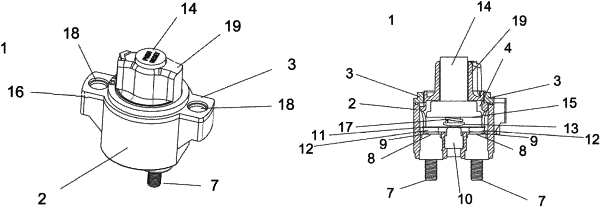| CPC H01H 71/16 (2013.01) [H01H 19/04 (2013.01); H01H 19/14 (2013.01); H01H 71/08 (2013.01); H01H 77/04 (2013.01)] | 13 Claims |

|
11. A rotary switch including an integrated overcurrent protection device, the switch comprising:
a housing;
a first terminal extending into the housing and electrically connected to a first terminal contact;
a second terminal extending into the housing and electrically connected to a second terminal contact;
a knob rotatable with respect to the housing;
a rotatable conductive element located within the housing and rotationally coupled to the knob to rotate in response to rotation of the knob, the rotatable conductive element rotatable between a first angular orientation in which the rotatable conductive element is electrically connected to the first and second terminal contacts and a second angular orientation in which the rotatable conductive element is not electrically connected to at least one of the first and second terminal contacts, the rotatable conductive element comprising a bimetallic element configured to change shape in response to electrical current above a specified limit, wherein the bimetallic element is configured to change shape between a first position in which the bimetallic element is electrically connected to the first and second terminal contacts when the rotatable conductive element is in the first angular orientation and a second position in which the bimetallic element is not electrically connected to at least one of the first and second terminal contacts; and
a reset mechanism configured to reset the bimetallic element from the second position to the first position, wherein the reset mechanism comprises a reset button concentric with a center post and a reset plate operably connected to the reset button, wherein depressing the reset button forces the reset plate against the bimetallic element to move the bimetallic element to the first position, and wherein the reset button is concentric with the knob and extends through a through-hole in the knob.
|